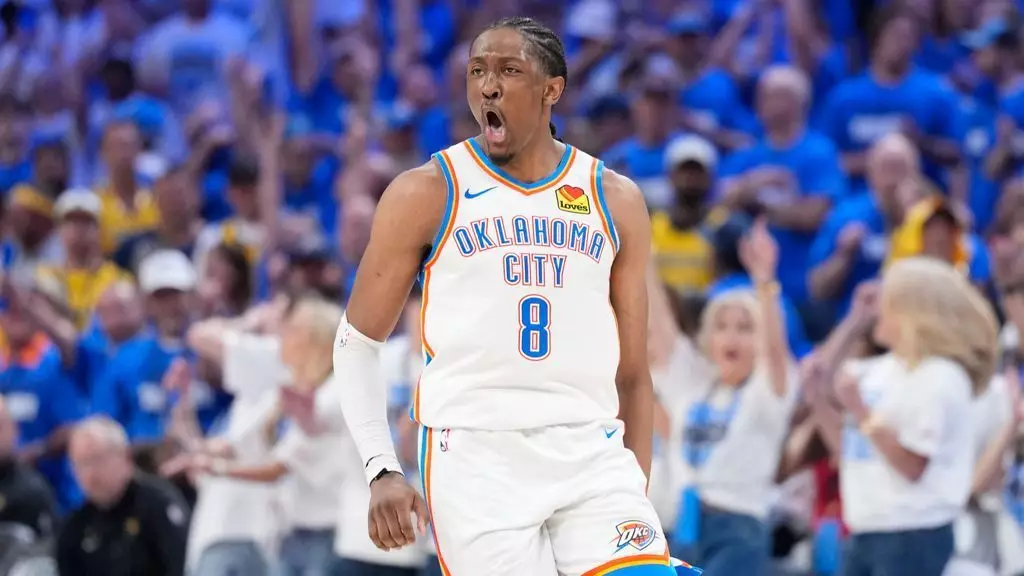Oklahoma City’s recent signings mark a pivotal shift in the NBA landscape, but not necessarily for the better. The Thunder’s aggressive pursuit of long-term commitments, culminating in a $287 million max extension for Jalen Williams and substantial deals for Shai Gilgeous-Alexander and Chet Holmgren, signals a team willing to spend heavily in hopes of maximizing their short-term window of contention. While some may laud this as unprecedented ambition, it risks transforming the franchise into a cautionary tale of financial hubris. Heavy payroll commitments, especially amidst looming luxury tax thresholds, threaten to choke future flexibility, diminishing their capacity to adapt if their core falters or team dynamics shift unexpectedly.
This strategy emphasizes immediate competitiveness over sustainable growth. For a franchise that’s historically operated in the shadows of more glamorous markets, the obsession with stacking talent feels like chasing fleeting success rather than cultivating a balanced team. This approach resembles a gamble often seen in high-stakes gambling rooms—risky, exhilarating, but potentially ruinous if the wagers don’t pay off.
The Illusion of Supercharged Aspiration
At first glance, the Thunder’s investments suggest a confident belief that their young core—Williams, Gilgeous-Alexander, and Holmgren—can sustain elite performance levels for years to come. But the reality is murkier. Williams, despite a stellar season, suffered a severe wrist injury that nearly derailed his momentum. His resilience in playing through pain and subsequent surgery exemplifies his dedication, yet also highlights the fragility of relying on young players whose bodies are still developing. The risks inherent in such heavy investments are amplified here, as the franchise’s fortunes rest heavily on their health and continued development.
Furthermore, the celebrated successes of their young stars—particularly Williams’ Finals heroics—are often exaggerated by narratives seeking to justify these hefty contracts. Basketball history is littered with promising young players who peaked early or succumbed to injuries, rendering long-term commitments a gamble more suited to high-stakes investors than pragmatic franchises. While the team’s gamble could produce a mini-dynasty, it equally threatens a period of mediocrity or stagnation if the stars falter. The illusion of immediate dominance, cloaked in the glamour of recent triumphs, may ultimately distract from the harsher realities of sustained success.
Financial Risks and Ethical Questions
The economic gamble isn’t just about the salary cap; it’s about the franchise’s identity and broader ethical considerations. The Thunder’s commitment leans heavily into the super-max valuations, soaking up resources that could be allocated more responsibly toward fostering community development, youth initiatives, or building a resilient competitive roster through prudent draft and trades. In prioritizing star power at the expense of financial sustainability, the franchise risks creating a façade of competitiveness that might unravel if injuries, underperformance, or a changing league landscape intervene.
Moreover, the narrative surrounding these contracts glosses over the broader implications for NBA parity and financial equity. When teams pour resources into a few marquee players, the resulting imbalance could tighten the league’s existing disparities, making competition less equitable and jeopardizing the league’s overall health. It raises a question: are these signings a testament to smart franchise building, or reflective of a greed-driven obsession with short-term fame?
Is this path sustainable or merely a fragile illusion?
Ultimately, the Thunder’s latest moves embody an almost reckless hunger for quick success. The obsession with locking in their “Big 3” could backfire, leaving the franchise hamstrung by payroll limitations for years to come. Their strategy reveals a lack of confidence in cultivating deeply rooted competitiveness through organic growth, instead opting for a high-wire act of star-studded excellence that might not last. It’s a high-stakes game played with other people’s money, glossed in excitement but fraught with peril. Whether Oklahoma City’s pursuit of a fleeting NBA dynasty will bear fruit or leave the franchise stranded in limbo depends on factors beyond their control—health, league parity, and perhaps the unpredictable twists of fate that govern sports and finance alike.


Leave a Reply